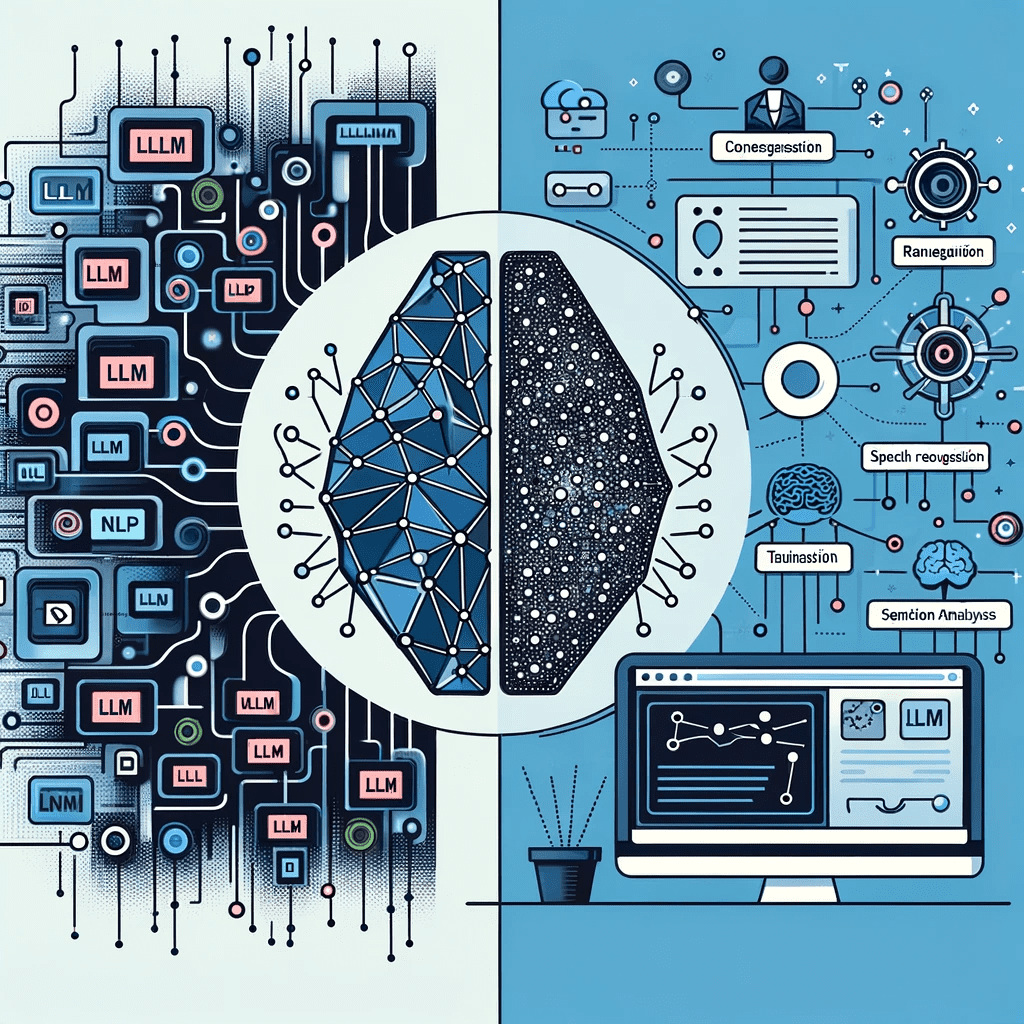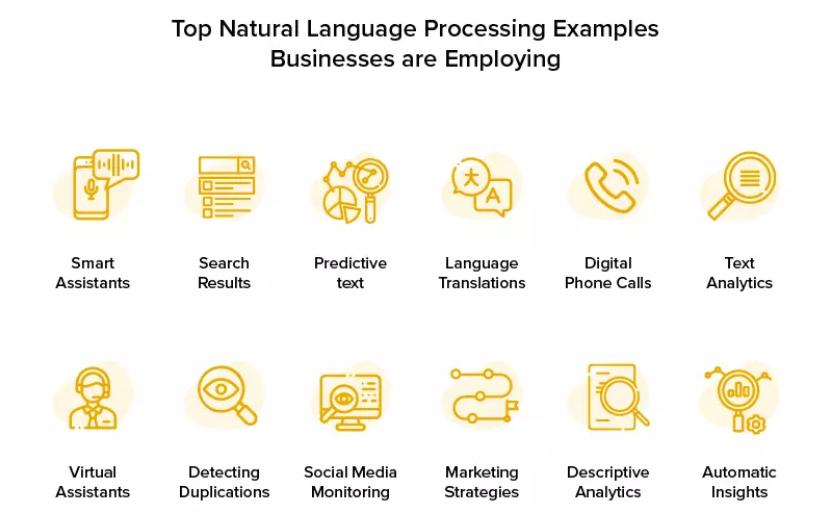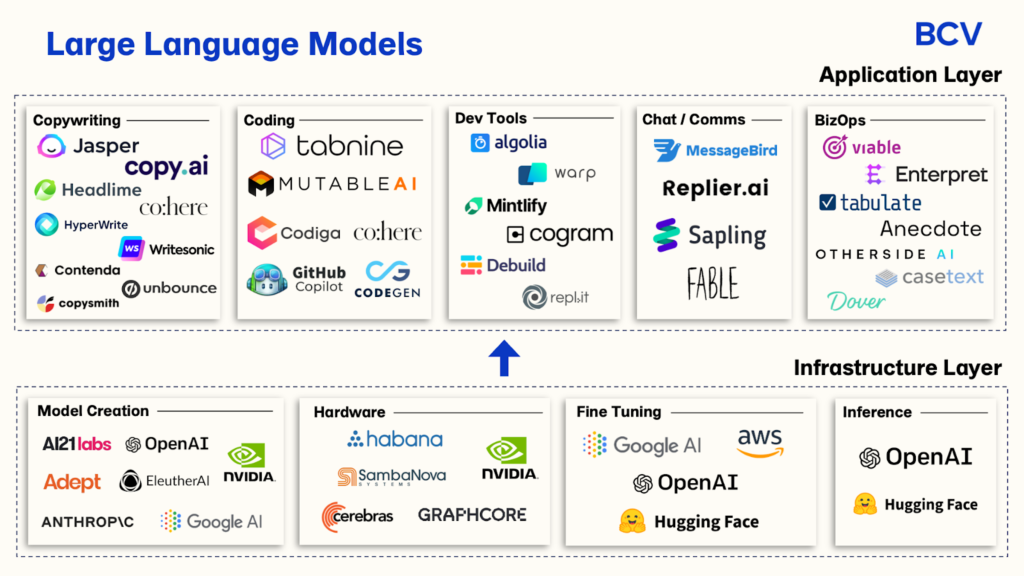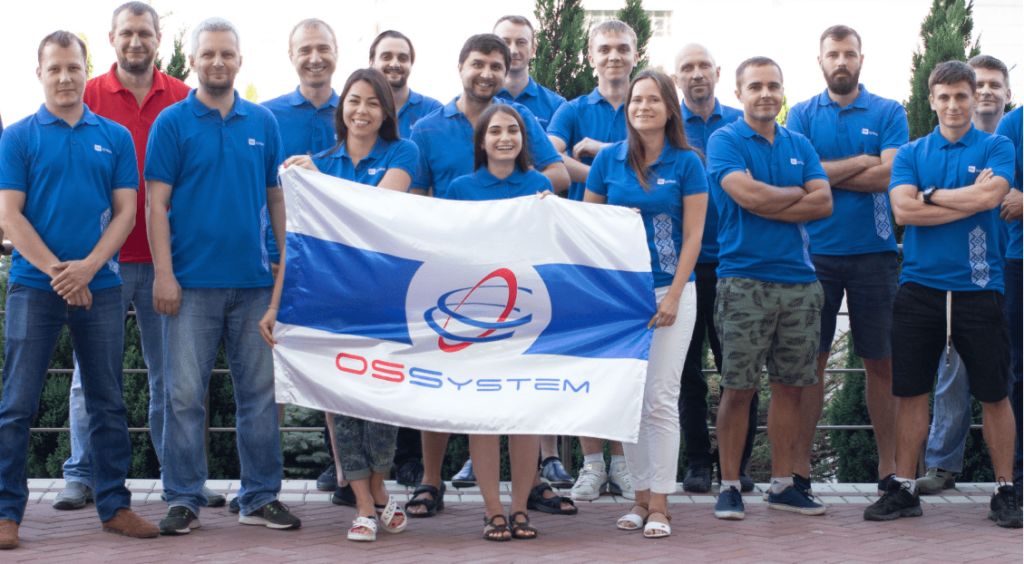LLM and NLP: How These Technologies Help To Reduce Business Costs
In the ever-evolving landscape of business operations, the integration of advanced technologies has become paramount for organizations striving to maintain competitiveness and efficiency. Among these transformative technologies, Large Language Models (LLM) and Natural Language Processing (NLP) stand out as powerful tools capable of revolutionizing various aspects of business management. From streamlining legal processes to enhancing communication and decision-making, LLM and NLP offer multifaceted solutions that extend far beyond their traditional applications.
What is NLP?

Natural Language Processing (NLP) is one of the most sought-after areas in data science today. It is developing alongside classical Machine Learning and Computer Vision. This area is responsible for everything spoken, written, and heard, which can be translated into text and processed with the help of NLP algorithms.
NLP specialists train large language models (LLMs) and virtual assistants to be more intelligent, understand the context, and give relevant answers. Large companies and researchers in different countries are now working on training large language models (LLMs) for expertise in different sectors of life.
AI development is ongoing actively. In China, AI is being used in pilot innovation zones. In the US, grants support industries using AI. In the next few years, we will be close to answering whether it is possible to create an artificial general intelligence (AGI) similar to or superior to natural intelligence in its capabilities.
Some NLP statistics
Natural Language Processing (NLP) is an incredible technology. Virtual assistants like Siri interact with you using technologies from this area of data science. All large language models (LLM) are based on NLP technologies:
- ChatGPT
- Bard
- Claude
- Gemini
Natural Language Processing is also used in narrower spheres. For example, algorithms can create financial statements.
According to a survey by John Snow Labs and Gradient Flow, 60% of technology leaders saw growth in NLP budgets of at least 10% already in 2021. A third (33%) said their NLP budgets grew by at least 30% already over 2020. The Market Research Future report indicates a possible growth of 27.6% in the NLP market from 2022 to 2030. The market is expected to reach approximately $357.7 billion by 2030.
How do businesses use NLP today?

Basically, the level of development of AI models helps businesses optimize processes, automate routine operations, reduce costs, and—in certain business functions like marketing—even generate profits. For example, NLP algorithms in recommendation systems help marketers optimize campaigns, while other algorithms can buy advertising on platforms like Albert and help analyze target audiences.
87% of companies expect AI and machine learning to help them increase revenue, improve operational efficiency, and enhance customer experience. Here’s how companies are already using NLP algorithms.
Selecting relevant news and finding insights from texts
NLP algorithms automatically find and highlight key industry news stories, helping companies stay up-to-date. This makes analyzing international trade, medical research, and finance domains easier.
Document recognition
Modern algorithms are able to recognize printed and even handwritten text. This direction is developing in medicine, for example, when it is necessary to systematize handwritten anamneses of patients.
Companies that compile family trees use the same technology. They use LLM and NLP to “study” archival documents or translations from one language to another.
Finding optimal prices
Some companies train models to search for optimal purchase prices by aggregating multiple offers. The algorithms can:
- Combine companies with similar needs
- Create cumulative orders for several of them
- Get a volume discount, gaining synergies in procurement
Employees who used to make price quote selections for weeks can now tackle more interesting tasks. In 2018, ASOS increased its order volume by 300% thanks to the fashion bot Enki. With the new chatbot, the ROI was 250%, reaching 3.5 times more potential customers.
Understanding user requests
Large businesses are gradually shifting typical user queries like “Where is my order?”, “When will the delivery be?” and “Call me” from live specialists to virtual assistants or telephone voice assistants.
Customer satisfaction sometimes drops, but they get answers faster, and the company saves money by reducing payroll.
Stenography and summarization
NLP-based language models are already capable of:
- Recording a transcript of an important meeting
- Highlight key issues
- Summarize the minutes or main conclusions of a meeting
However, using NLP in business can raise ethical and confidential issues. Word processing often involves using personal data that needs to be protected from unauthorized access.
Large Language Models (LLMs) – the next step for businesses

The interest in NLP is particularly high right now with the rapid development of so-called Large Language Models (LLMs). Modern LLMs are really impressing users worldwide with their ability to speak in human language and give plausible answers to various questions, although not always correct.
So far, language models still struggle to solve non-trivial problems because they are not trained to think logically and critically. Basically, LLMs recognize a query and suggest the most likely answer given the data on which the model was trained. The better the NLP engineers have done, the more natural and applicable the result is.
Now, the experts have to train the models to give the right answers to complex and non-trivial user queries. These models must be able to extract answers from industry-specific, highly specialized knowledge sources and deeply understand the specifics of different spheres of life and industries.
Let’s say an apartment owner is faced with a situation where his or her dwelling has been flooded due to a burst pipe in a neighboring room. He or she can ask the virtual assistant to draw up an appeal to the management company.
Previously, such models could give an informational reference about what the user needs to do but did not solve his or her ultimate problem.
A modern LLM with domain expertise in real estate and law should be able to structure the complaint correctly, point to the relevant legislation, and provide recommendations for further actions. Thus, the owner of an apartment:
- Receives a ready-made appeal, which LLM itself can send to the management company
- Understands how to act afterwards
The large language model (LLM) should save the user from wasting time and effort and unnecessary involvement in complex bureaucratic procedures and subtleties of jurisprudence.
Specifics of training Large Language Models (LLMs)
The process of training large language models in NLP for highly specialized domain knowledge, such as legal or medical knowledge, can be complicated by a lack of data—large amounts of information are required to train NLP models. In the case of highly specialized domains, a limited amount of formalized and digitized data may be available.
A barrier may be the complexity of language: legal and medical texts may contain unspoken terms and phrases that can be understood ambiguously.
However, AI is already helping to fight disease. In 2020, NLP developers actively fought the coronavirus:
- BlueDot used AI to warn of an outbreak in Wuhan before official WHO statements.
- Microsoft and Allen Institute for AI unveiled the CORD-19 dataset with academic papers on the coronavirus.
- Alibaba has developed a system that diagnoses COVID-19 in 20 seconds with 96% accuracy from lung CT scans.
The difficulties of building up domain expertise are related to the imbalance of digitized highly specialized information, where there is less information in open sources on certain topics than on others.
In addition, legal and medical texts may contain confidential and sensitive information, such as personal data, that must be protected. To overcome these challenges and difficulties, it is necessary to:
- Invite experts from different areas of our lives (domains)
- Formalize and digitize their expertise
- Then, large language models will be trained based on their expertise
When making decisions and answering users’ questions, it is necessary to force the models to consider not only the data on which they were trained but also open data from the Internet. Developers must also use specialized verified knowledge bases to teach the machine to think critically.
Large Language Models (LLMs) in healthcare

Artificial intelligence in medicine is used to:
- Analyze images
- Monitor remote patients
- Develop drugs
- Support medical decisions
- Perform surgeries
- Create prosthetics
- Create individualized treatment plans
- Predict the risk of disease
AI works in many areas of medicine:
- Genetics. LLM helps analyze genetic data and recognize mutations, even small ones.
- Oncology. New technologies are greatly improving the accuracy of diagnoses. Abnormal cell formation can be detected with greater reliability, and potential cancers can be recognized at an early stage. Medical decision support systems in oncology also assist in selecting and monitoring therapies and other tasks.
- Dermatology. LLM can classify skin masses more efficiently than doctors can.
- Ultrasound exams. For example, in ultrasound examinations of pregnant women, AI can detect abnormalities in the baby.
- Surgery. Robotic systems make it possible to perform complex surgeries accurately and efficiently. Artificial intelligence provides physicians with unique tools and data, thereby improving the outcomes of surgical procedures.
- Neurology. Artificial intelligence is helping doctors diagnose stroke. By comparing a patient’s brain image with a large number of other images, the neural network identifies possible abnormalities.
- Psychiatry and psychotherapy. Some patients are much more comfortable communicating and sharing their personal problems with a virtual doctor than with a real one. LLMs help people cope with their psychological problems, diagnose them, and even prescribe treatment.
- Pharmaceuticals and pharmacology. LLM is helping to significantly reduce the time required for clinical trials and drug development, as well as reduce the cost of drug production. Also, new technologies can improve the quality of drugs and reduce the number of side effects.
The 21st century is a time of active implementation of AI in medicine. LLMs are used to identify lesions, detect diseases, make diagnoses, and generate reports. Prediction and question-answering models are being created, and robot doctors and robot nurses are emerging.
Large Language Models (LLMs) in education

Artificial intelligence in education can significantly improve the learning process and make it more accessible and interesting for absolutely everyone. Artificial intelligence in education is used for:
- Automatic assignment checking. One of the main problems in education is the heavy burden on teachers and professors to check assignments and control knowledge. AI can greatly simplify this process by allowing automatic assignment checking and giving feedback to students. For example, when using MOOCs (Massive Open Online Courses), AI can grade assignments and answer students’ questions automatically.
- Data visualization. AI can help visualize data in education and make learning more interesting and understandable. For example, data visualization can be used to create interactive learning materials that can help students better understand and remember the material.
- Using AI in career guidance. Recommendation systems that use LLMs can provide students with a list of the most suitable occupations for them based on analyzing their skills and interests.
- Game-based learning. AI can be used to create learning games that help students better memorize material and develop skills. Learning games allow students to put their knowledge into practice and receive feedback. For example, games that utilize LLM can help students improve their programming skills as well as develop logical thinking and creative problem-solving.
If you want to know more about this topic, read our article about AI in education.
Conclusion

Natural Language Processing is a key element in automating and optimizing business processes. NLP helps automate customer support services, reducing operational costs and increasing customer satisfaction. With NLP, companies can:
- Analyze massive amounts of data
- Analyze customer feedback
- Adapt to market conditions
If you are looking for a reliable IT partner to integrate or develop LLM and NLP solutions, our OS-System team is here to help! We are a Ukrainian development team consisting of diverse tech experts. Our expertise can assist you in education, medicine and biotechnology, mobile development, and custom software development.
Let’s embark on this journey together!

Subscribe to us










